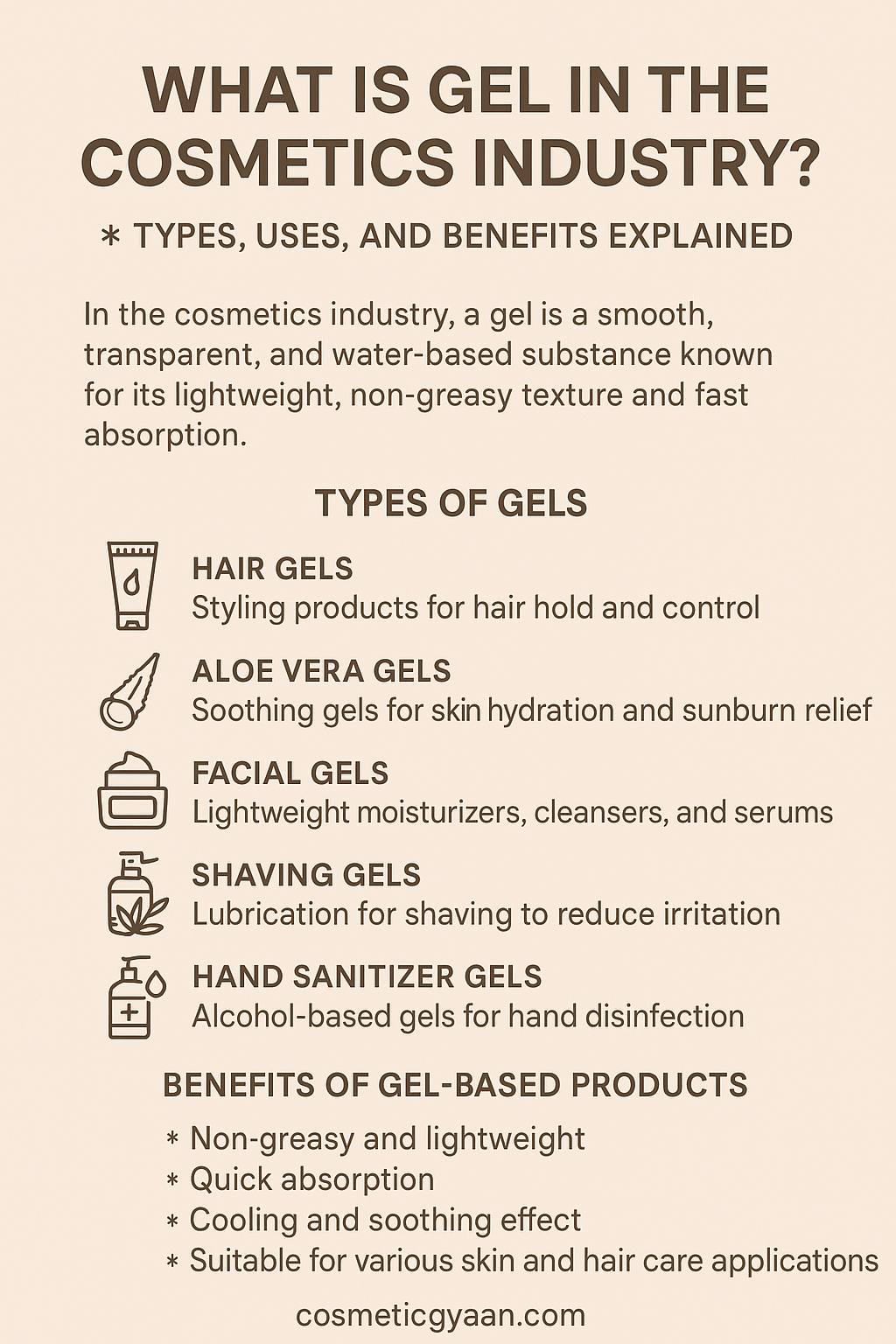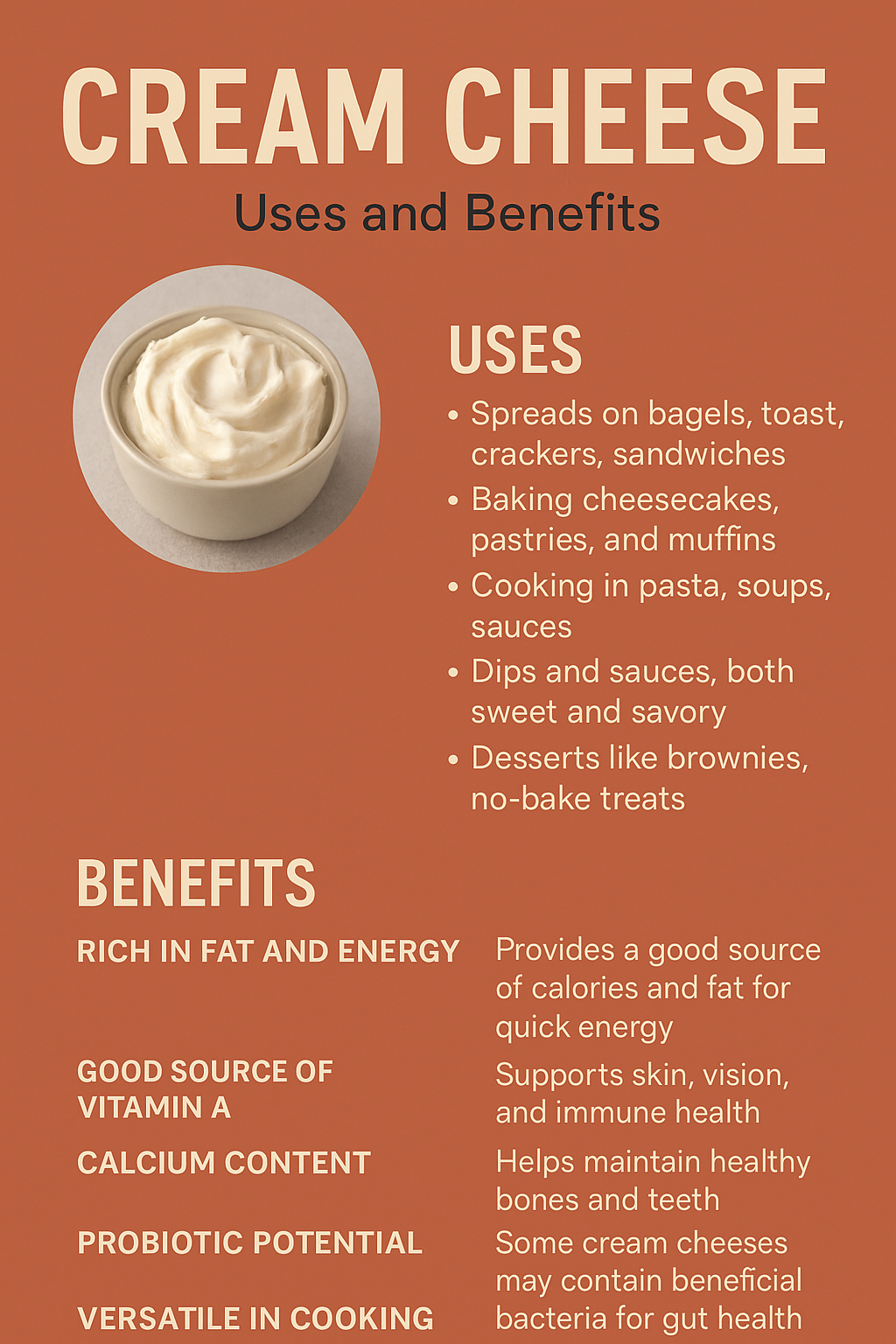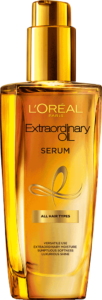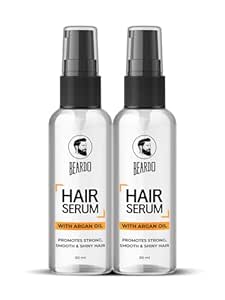Types, Uses, and Benefits Explained
The cosmetics industry is full of versatile products, and one such essential formulation is gel. Gels are widely used in skincare, haircare, and personal care products because of their light texture, non-greasy feel, and fast absorption. In this blog, we will explore what gel is, how it is made, its types, and its key benefits in the cosmetics industry.
What is Gel?
In the cosmetics industry, a gel is a semi-solid system consisting of a liquid phase thickened by a gelling agent to form a three-dimensional structure. Gels are known for their smooth texture, transparency, and water-based composition, making them ideal for various skin and hair applications.
Gels are typically easy to spread, provide quick absorption, and give a cooling sensation upon application, which makes them highly preferred in modern cosmetic formulations.
Key Characteristics of Gels:
Lightweight and non-greasy
Fast absorbing
Provide a cooling and soothing effect
Usually water-based
Transparent or translucent appearance
Types of Gels in the Cosmetics Industry
The cosmetics industry uses various gels, each serving unique functions and benefits. Here are the most common types:
1. Hair Gels
Hair gels are styling products that help to hold hair in place, give shape, and control frizz. They are used to create various hairstyles, from sleek looks to spiked textures.
Benefits:
Strong hold
Long-lasting styling
Adds shine or matte finish based on formulation
—
2. Aloe Vera Gels
Aloe vera gels are soothing gels used for skin hydration, sunburn relief, and healing minor skin irritations.
Benefits:
Deep skin hydration
Anti-inflammatory properties
Suitable for sensitive skin
—
3. Facial Gels
Facial gels include moisturizers, cleansers, and serums that have a gel-like consistency. They are lightweight and quickly absorbed by the skin.
Benefits:
Non-comedogenic (do not clog pores)
Suitable for oily and acne-prone skin
Provide a refreshing feel
—
4. Shaving Gels
Shaving gels offer lubrication between the skin and the razor, reducing the risk of cuts and irritation.
Benefits:
Smooth razor glide
Less skin irritation
Transparent formula allows precision
—
5. Hand Sanitizer Gels
These alcohol-based gels are used for disinfecting hands quickly without the need for water.
Benefits:
Quick-drying
Effective against germs
Convenient for on-the-go use
Key Ingredients in Gels
Water: Main solvent providing hydration.
Gelling Agents: Such as Carbomer, Xanthan Gum, or Hydroxyethylcellulose for thickening.
Active Ingredients: Aloe Vera, Salicylic Acid, Vitamins, Herbal Extracts.
Preservatives: To prevent microbial growth.
Fragrances and Colors: For sensory appeal (optional).
Benefits of Gel-based Products in Cosmetics
Non-Greasy: Perfect for oily and combination skin.
Quick Absorption: Ideal for fast-paced lifestyles.
Hydration: Provides moisture without heaviness.
Cooling Effect: Excellent for sensitive or sun-exposed skin.
Versatile: Suitable for hair styling, skincare, body care, and hand hygiene.
Conclusion
Gels are an integral part of the cosmetic and personal care industry due to their unique texture, easy application, and skin-friendly properties. Whether in the form of hair gel, aloe vera gel, facial gel, or hand sanitizer, gels offer quick action, light feel, and effective results.
If you are someone who prefers lightweight, fast-absorbing products, gel-based cosmetics can be a great addition to your skincare or haircare routine.




